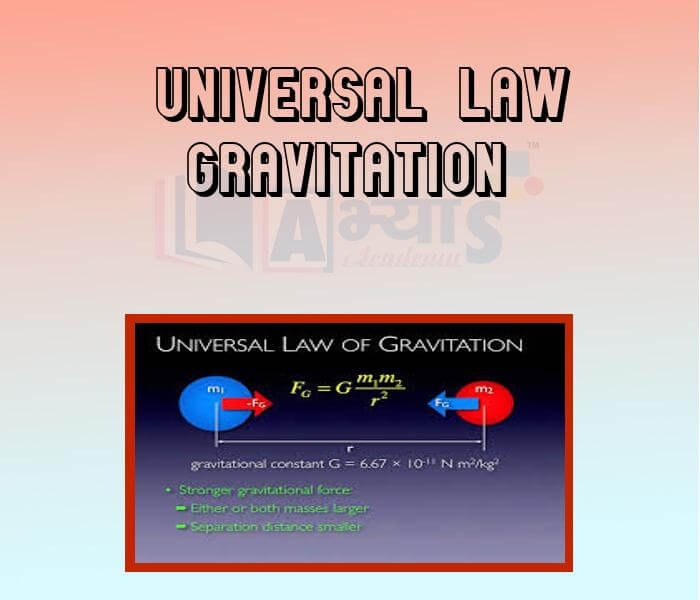Universal Law of Gravitation







Universal Law of Gravitation
The Universal Law of Gravitation:
The law was formulated by Newton. The gravitational force of attraction between any two particles in the universe is directly proportional to the product of the masses of the particles and is inversely proportional to the square of the distance between the particles. The direction of the force is along the line joining the two particles. Let A and B be two particles of masses and
respectively. Let the distance AB = r. By the law of gravitation, the particle A attracts the particle B with a force F, such that
F ∝ (for a given separation between the particles)
Here “G” is a constant known as the universal constant of gravitation. The value of G was experimentally measured in the laboratory by Cavendish, long after Newton’s death. This value is
If earth attracts an object towards its centre with the force of 500 N, the force of attraction exerted by the object on earth is | |||
| Right Option : C | |||
| View Explanation | |||
What will be the acceleration due to gravity if the mass of the planet is doubled and the radius halved? | |||
| Right Option : C | |||
| View Explanation |
The force of gravitation between two objects of masses 1 Kg and 2 Kg separated by a distance of 100 cm, is | |||
| Right Option : A | |||
| View Explanation | |||
Students / Parents Reviews [10]
My experience with Abhyas academy is very good. I did not think that my every subject coming here will be so strong. The main thing is that the online tests had made me learn here more things.

Hiya Gupta
8thIt was a good experience with Abhyas Academy. I even faced problems in starting but slowly and steadily overcomed. Especially reasoning classes helped me a lot.

Cheshta
10thOne of the best institutes to develope a child interest in studies.Provides SST and English knowledge also unlike other institutes. Teachers are co operative and friendly online tests andPPT develope practical knowledge also.

Aman Kumar Shrivastava
10thAbhyas is a complete education Institute. Here extreme care is taken by teacher with the help of regular exam. Extra classes also conducted by the institute, if the student is weak.

Om Umang
10thI have spent a wonderful time in Abhyas academy. It has made my reasoning more apt, English more stronger and Maths an interesting subject for me. It has given me a habbit of self studying

Yatharthi Sharma
10thMy experience was very good with Abhyas academy. I am studying here from 6th class and I am satisfied by its results in my life. I improved a lot here ahead of school syllabus.

Ayan Ghosh
8thMy experience with Abhyas is very good. I have learnt many things here like vedic maths and reasoning also. Teachers here first take our doubts and then there are assignments to verify our weak points.

Shivam Rana
7thIt has a great methodology. Students here can get analysis to their test quickly.We can learn easily through PPTs and the testing methods are good. We know that where we have to practice

Barkha Arora
10thBeing a parent, I saw my daughter improvement in her studies by seeing a good result in all day to day compititive exam TMO, NSO, IEO etc and as well as studies. I have got a fruitful result from my daughter.

Prisha Gupta
8thIt was good as the experience because as we had come here we had been improved in a such envirnment created here.Extra is taught which is beneficial for future.
